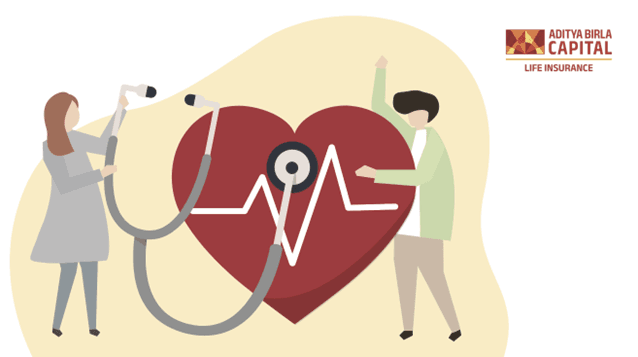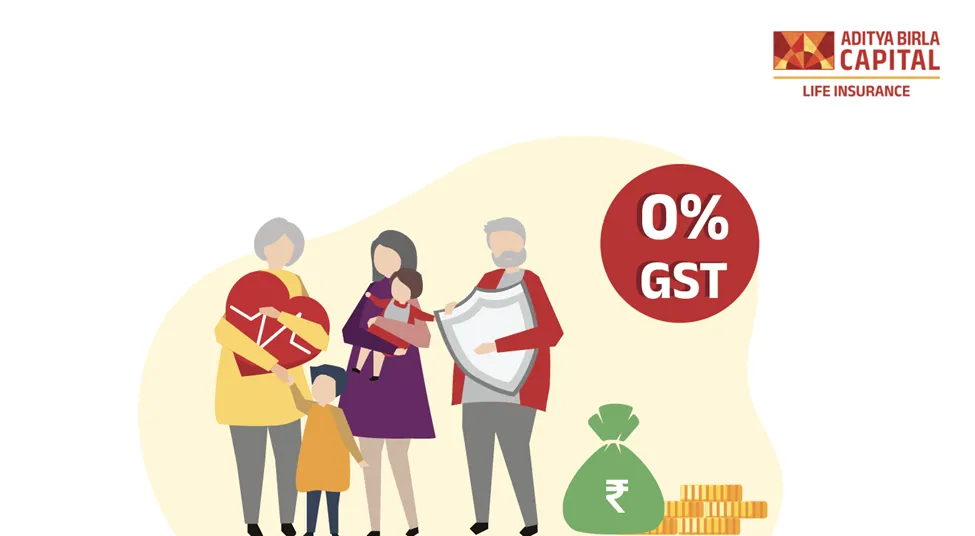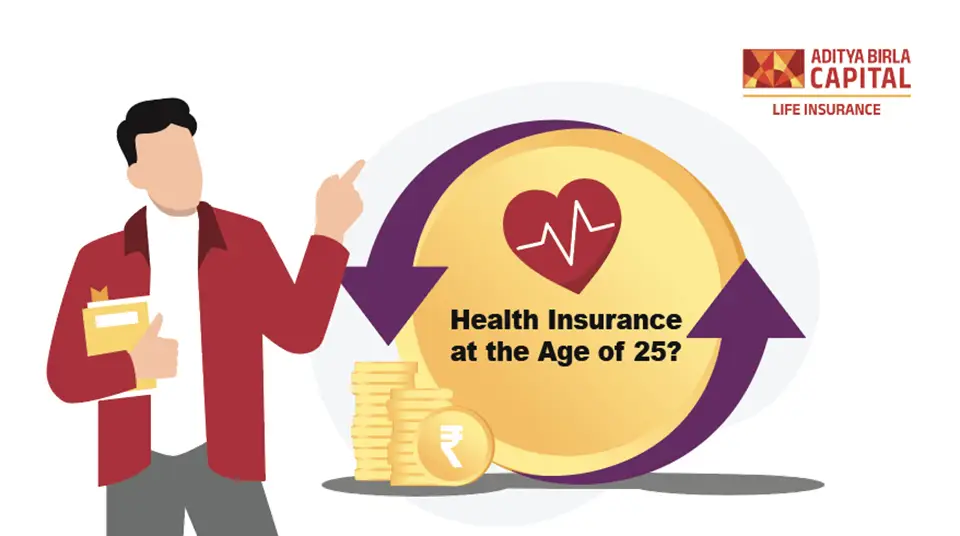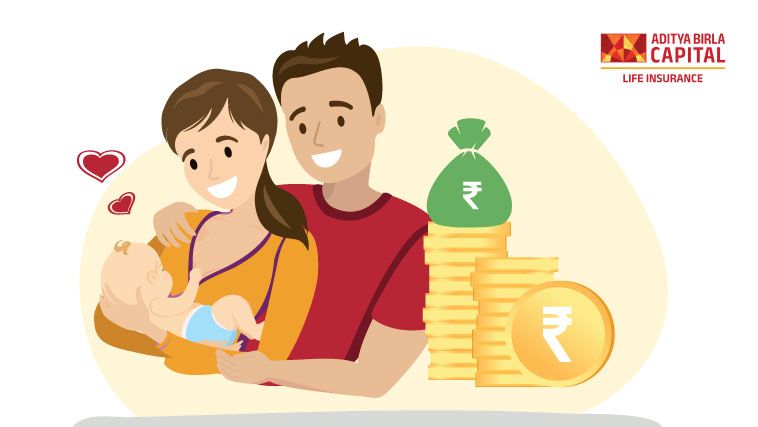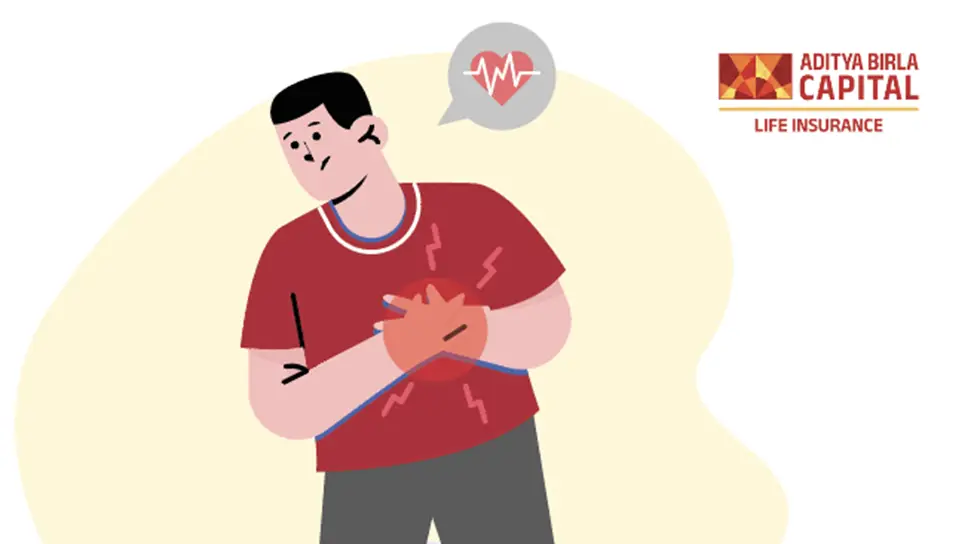Gone are the days when heart attacks were considered an issue only with the elders. The landscape has shifted and the boundaries have blurred! Now, the risk of heart attack looms over every age group, even in the vibrant tapestry of 20s and 30s. Every 1 in 5 heart attack patients is reported to be under the age of 40.1 So, what has changed so much that even young people are at risk of a heart attack? Well, the answer is - our lifestyle!
From sitting with our devices for hours to consuming processed foods and decreasing physical activity, our sedentary lifestyle has led to an increased risk of heart attacks. To reduce it, we need to prioritise our health and shift towards a healthy lifestyle. This will help us maintain a healthy heart and protect us from the risk of a heart attack - paving the path to well-being.
In this article, let us understand what heart attacks are, their underlying risk factors, symptoms, prevention, and whether health insurance covers them.
What Is A Heart Attack?
Heart attacks, also called myocardial infarctions (MI), are one of the leading cardiovascular diseases (CVDs) causing death worldwide. Just like any other part of our body, our heart requires a continuous supply of blood to function properly. When the blood flow to the heart is insufficient, it might cause serious harm to the heart muscle - endangering a person's life.
A heart attack is a critical health condition that occurs when the blood flow to the heart is suddenly blocked, typically due to the presence of a blood clot. If immediate treatment is not provided to restore this flow, the heart muscle may get damaged to a large extent. So, the sooner you receive medical treatment, the better your chances of survival.
What Are The Key Factors That Contribute To Heart Attacks?
There are many factors that contribute to the risk of heart attacks. Some of them are beyond our control, such as family history, while others can be managed, especially those related to our lifestyle.
Here are some common risk factors -
- High Blood Pressure
- High Low-Density Lipoprotein (LDL) Cholesterol
- Diabetes
- Obesity
- Stress
- Unhealthy Diet
- Physical Inactivity
- Consuming Alcohol
- Smoking
What Are The Symptoms Of A Heart Attack?
Here is a list of the common signs and symptoms of heart attacks -
-
Chest Discomfort
Severe or mild chest pain often involves discomforts like pressure and tightness. This feeling may also extend to your arms, jaws, neck, and back.
-
Digestive Symptoms
Some people may experience feelings of nausea, heartburn, indigestion, or abdominal pain.
-
Cold Sweat
A sudden outbreak of cold sweat not attributable to external factors, such as exercise or heat, may be a sign of a heart attack.
-
Tiredness
Unusual and regular tiredness or fatigue, even with minimal exertion, might be a symptom of an underlying heart–related issue.
-
Dizziness and Lightheadedness
Feeling suddenly dizzy or lightheaded, without any apparent cause, might indicate insufficient blood flow to the brain.
-
Shortness of Breath
Difficulty in breathing or shortness of breath, even with minimal physical activity or at rest, may be a sign of an impending heart problem.
If you experience any of these symptoms, consult your healthcare expert immediately.
How To Reduce The Risk Of Heart Attack And Stroke?
Research shows that you can prevent heart attacks in more than half of the cases by making simple lifestyle changes, such as consuming a balanced diet, maintaining a healthy weight, getting sufficient sleep, adhering to prescribed medication, etc.
Here are the top 5 ways in which you can reduce risk of heart attack -
1.Quit Smoking and Reduce Your Alcohol Consumption
One of the life-changing habits you can develop for the health of your heart is to quit smoking. Even if you don't smoke, you need to avoid second hand smoke. This happens when you breathe in the smoke exhaled by another smoker or from burning tobacco products.
Along with quitting smoking, you should also avoid excessive alcohol consumption. It can raise your blood pressure and calorie count - causing weight gain. And both of these elements are significant factors contributing to heart disease.
2.Regular Screening
Make sure to go for a routine body screening to know if you are at risk of heart disease and keep a watch on the following things -
-
Blood Pressure
If you are an adult, go for a blood pressure checkup at least once a year and more often if you have high blood pressure. A few effective ways to keep your blood pressure under control are -
-
Eating a low saturated-fat diet,
-
Working out regularly,
-
Reducing salt intake,
-
Taking prescribed medicines, if needed.
-
Cholesterol Levels
Making changes in your lifestyle and taking the prescribed medicines (if needed) can help lower your cholesterol levels. You can also try consuming a diet rich in fibre, low in cholesterol, saturated fat, and refined sugars.
-
Diabetes
People with diabetes are more likely to contract a heart attack. So, it is important to get yourself tested for diabetes regularly, especially if you have risk factors such as a family history or an unhealthy lifestyle. If you have been diagnosed with diabetes, it is essential to keep it under control through proper management and regular monitoring of blood sugar levels.
3.Eat a Healthy Diet
A healthy diet is a significant lifestyle change you can make to reduce your risk of a heart attack. You must consume plenty of fresh fruits, grains, vegetables, and fluids. When it comes to fats, opt for unsaturated sources like avocados, nuts, and seeds, as they increase levels of good cholesterol and aid in preventing artery blockages. On the other hand, it's important to avoid saturated fats found in butter, ghee, and hard cheese, as they can elevate levels of bad cholesterol in your blood. Also, try to avoid food high in sodium, salt, and sugar.
4.Be More Physically Active
Engaging in regular exercise has numerous advantages. It can strengthen your heart and improve the circulation of blood. By consuming a balanced diet and exercising regularly, you can maintain an ideal body weight, reduce cholesterol levels, and control your blood pressure - minimising the risk of heart disease. You can also try aerobic exercises, like walking, swimming, or dancing, to make your heart work more - ensuring its long-term health.
5.Manage Stress
Sometimes, people opt for unhealthy ways like overeating, smoking, or drinking to cope with stress, increasing the risk of a heart attack. However, it is important to adopt healthy strategies to manage it effectively. You can try engaging in physical activities, relaxation exercises, meditation, etc., to fight back against stress.
Today, medical expenses are soaring high. So, in case you are hospitalised due to a heart attack, you may have to bear hefty medical bills, causing a significant financial burden on you. Therefore, you should purchase a health insurance plan to safeguard your hard-earned money.
Does Health Insurance Cover Heart Attacks?
Yes! Health insurance is the ultimate recourse to protect yourself against the financial burden of costly heart-related treatments. You can also consider a critical illness plan, an add-on specifically designed to cover you against serious or life-threatening diseases such as heart attacks, stroke, cancer, etc.
If you're specifically concerned about heart-related conditions, you can also explore dedicated insurance policies that are designed to address these ailments comprehensively. Insurance providers offer a variety of options under different names and categories to suit your specific needs. So, make sure to check with them in order to find the perfect fit.
Conclusion
In today’s fast-paced world, both old and young people are at risk of heart attacks. However, the good news is that you can shield yourself from the financial stress of costly treatments with health insurance plans. They will provide you with both necessary financial assistance and peace of mind - in case something unfortunate happens.
Sources
https://www.cminj.com/blog/whats-behind-the-rise-in-heart-attacks-among-young-people[1]

